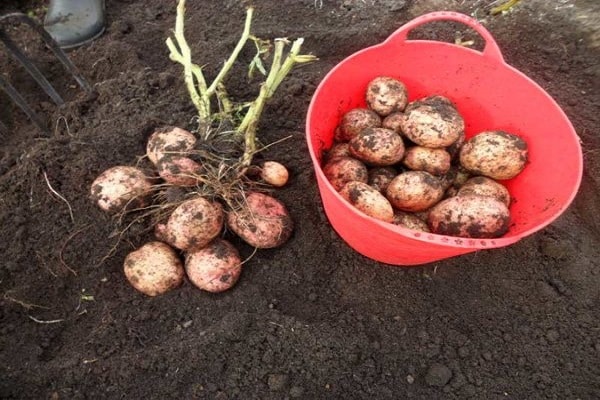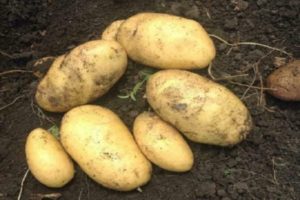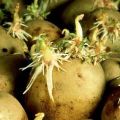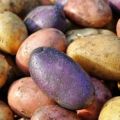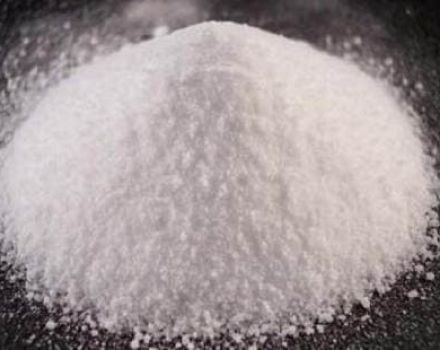Description of the potato variety Bullfinch, features of cultivation and care
The potato variety Bullfinch appeared relatively recently, but has already been included in the lists of the State Register. Domestic breeders gave the name to the potato for its beautiful, reddish peel and frost resistance. The variety quickly gained recognition not only among Russian gardeners and farms, but also among residents of the neighboring countries due to its excellent keeping quality, excellent taste and marketable appearance. The early crop is suitable for cultivation in the North-West region, the Urals and Siberia.
Description of the variety
Young bullfinch tubers are buried 45-50 days after planting, the variety reaches full readiness on the 55-60th day. The variety is characterized by amicable ripening.
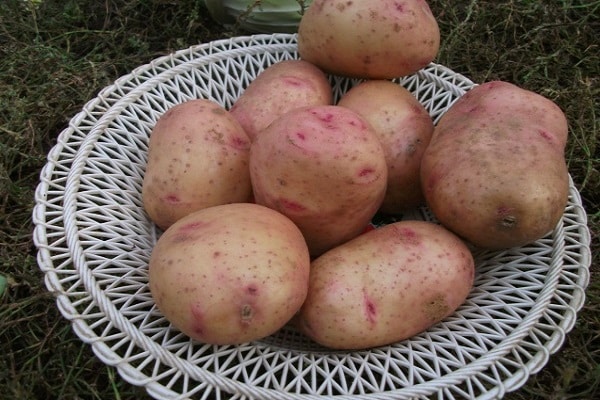
Erect, densely leafy bushes grow of medium height. Large fleshy leaves are devoid of specific waviness. Bright lilac flowers adorn the site during potato flowering.
Smooth oval tubers with small eyes on a reddish skin weigh 90 g. Creamy white pulp with a high starch content (16%) crumbles during cooking. Suitable for the preparation of many dishes. Baked potatoes and potato chips are especially good.
Bullfinch's yield reaches 450 centners per hectare. The first digging gives 50-110 centners. Such indicators of an early ripening vegetable determine the economic benefits of growing.

Growing
Potatoes Bullfinch is picky about the soil. Heavy, clayey, marginal, weed-filled lands will not allow a high and high-quality harvest.
It is necessary to prepare the site for planting potatoes in the fall: destroy weeds, plow, apply organic fertilizers and superphosphate. Leave the wood ash until spring.
It is important to follow the crop rotation and return the potatoes to their original place after four years. Remediation of the soil is carried out by sowing siderates in the fall. In the spring, the site is dug up and fertilized again. If there is not enough ash or organic matter, they are added directly to the wells. Effective introduction of granules with a high potassium content, OMU "Potato", Kemira preparation.
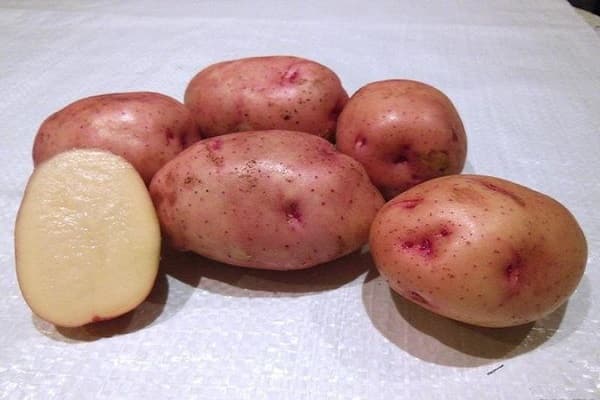
The best predecessors for the Bullfinch potato are corn, cucumbers and legumes. Disembarkation after nightshades is not recommended.
Due to the susceptibility to nematode infestation, the bullfinch seed material needs to be processed before planting in the ground. For this purpose, drugs such as Aktara, Maxim, Fitosporin, Mikon, copper sulfate, ash are purchased.
It is equally important to germinate the tubers, which speeds up the emergence of seedlings. This procedure is carried out in the light, at a temperature of +12 ºC, one month before planting.
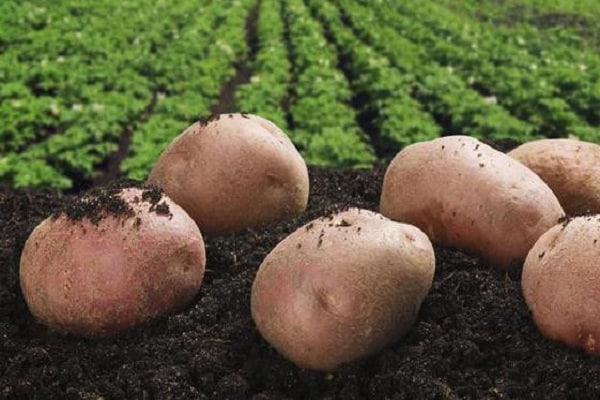
An early ripe variety is planted in May. The exact date depends on the weather conditions. The soil temperature should warm up to +8 ºC. The distance between holes or furrows is maintained within 30–35 cm. The interval between rows is 70 cm.
Bullfinch potatoes are planted no deeper than 6–7 cm to avoid delayed germination. For the successful formation of the root system in the first week after planting, watering is not shown.

Care features
With the appearance of the first shoots, after 8-10 days from the moment of planting, the ridges are harrowed to remove the surface crust and weeds. Watering the Bullfinch potatoes is required as needed, only during a prolonged drought. In the absence of rain, watering is organized two weeks after the emergence of seedlings, then during the budding period, and at the peak of flowering. Early potatoes need hydration in early summer.
Water the potatoes in the early morning, trying not to get on the leaves, which is convenient to do between the rows. In the heat, it is recommended to mulch the plantings with cut grass, peat, humus, this will retain moisture and destroy most weeds.
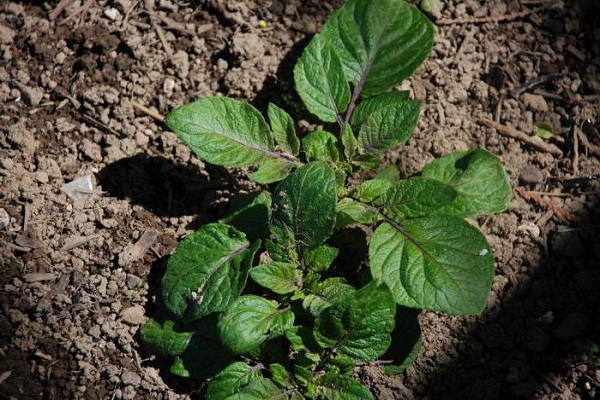
Potatoes start hilling when the sprouts reach 10-12 centimeters in height. Residents of the northern regions prefer to fill up the seedlings completely. Other gardeners do the same in case of June coolness.
Important hilling is at the beginning of flowering, when the Bullfinch forms tubers, which requires loose soil, free air penetration and the formation of a compact bush.
It is imperative to sprinkle potatoes, this increases the yield, creating comfortable conditions for growth.
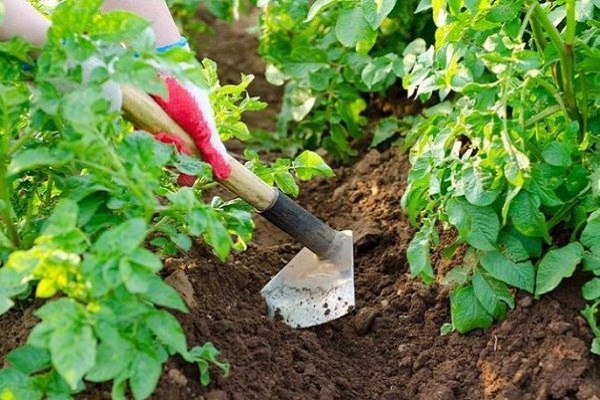
The characteristic of the variety allows you to do without summer dressing if fertilizers were applied in the fall. Occasionally, plants need replenishment, which is applied before the first hilling in the form of organic matter - bird droppings or mullein. A good option is nitrophoska, complex fertilizers and nettle infusion. With the appearance of buds, potash, phosphorus fertilizers or ash are used. Spraying of plants with compositions containing humates, boric acid, accelerating the formation and ripening of fruits, is effective.
Advantages and disadvantages
Description of the potato variety Bullfinch includes a number of advantages:
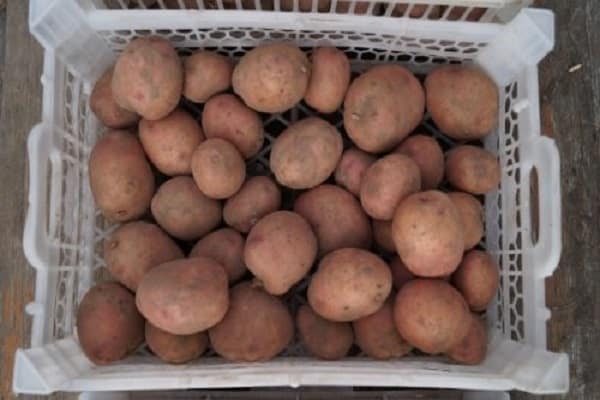
- Excellent taste.
- Amicable ripening.
- Good yield indicators.
- Keeping quality is up to 95%.
The disadvantage of this variety is susceptibility to nematodes.

Pests and diseases
Snegir potatoes are moderately resistant to diseases and pests:
- Golden potato cyst nematode.
- The causative agent of cancer.
- Alternaria.
- Common scab.
- Fusarium.
- Verticillosis.
Ring rot and Rhizoctonia Bullfinch are slightly affected. Phytophthora affects only the tops, it practically does not threaten tubers.
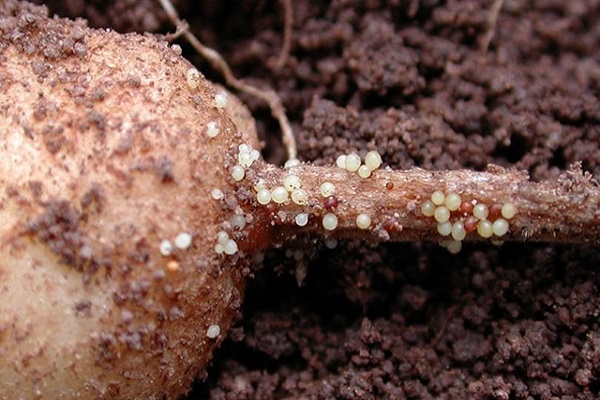
For preventive purposes, potatoes are powdered with wood ash, extracts of celandine or tansy, which is quite effective and non-toxic. In the event of the appearance of insect pests on the plantings of Snegir potatoes, special chemicals have to be used.
Harvesting and storage
Harvesting starts 45 days after germination. Full maturity occurs on day 55-60. The dates are shifted depending on the climatic conditions of the region. Bullfinch begins to dig up potatoes in dry, sunny weather, so that the tubers have time to dry out on the ridges before moving under the canopy. After drying, the fruits are sorted out and stored in a cellar, basement, balcony or loggia in wooden containers or nets.
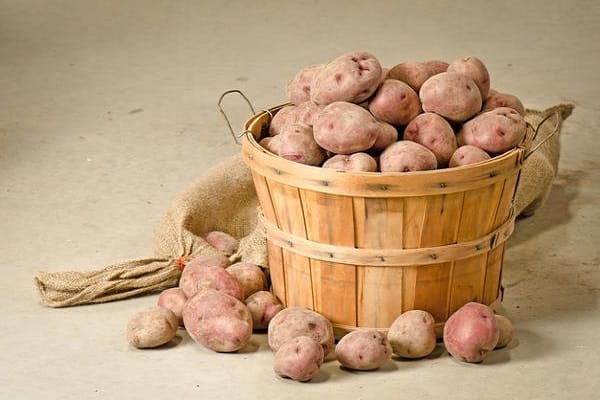
The early ripening variety is suitable for replanting and getting a double harvest in one season, which is useful for farms growing vegetables for commercial use.
Bullfinch is tolerant to temperature extremes and precipitation, therefore it is indicated for cultivation in the northern regions of Russia.
